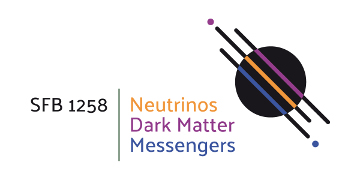SFB1258 group meeting
11.07.2025, 2 p.m.
venue: Seminar room 2024, Physics Department
Speaker: Dr. Imma Rea (INFN Naples): The multi-PMT Optical Module of KM3NeT
Abstract: KM3NeT is a research infrastructure with neutrino telescopes at two sites in the Mediterranean Sea for the detection of high-energy cosmic neutrinos. The two underwater telescopes, ARCA and ORCA, are Cherenkov detectors, using similar technology but with different geometrical layouts. In this way, it is possible to cover a large range of neutrino energy and address various science topics ranging from neutrino astronomy to neutrino oscillation research. The main challenge is to instrument a cubic kilometer of detection volume with optical modules for the detection of Cherenkov radiation. The technology of the KM3NeT optical module follows a multi-PMT approach. It contains 31 three-inch photomultiplier tubes for high resolution, good positioning and timing calibration. Its integration process follows a strict protocol as the production takes place in parallel in different integration sites. In this proceeding, we will describe the KM3NeT optical module technology and its integration process.


